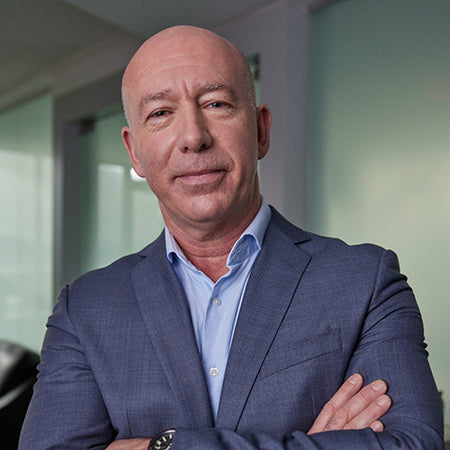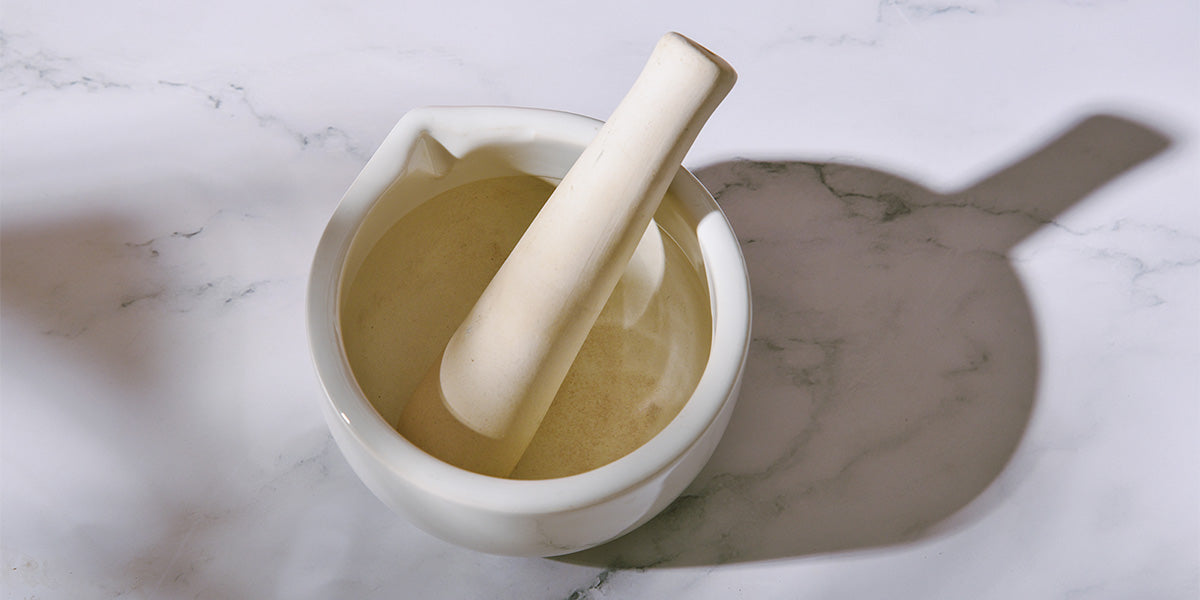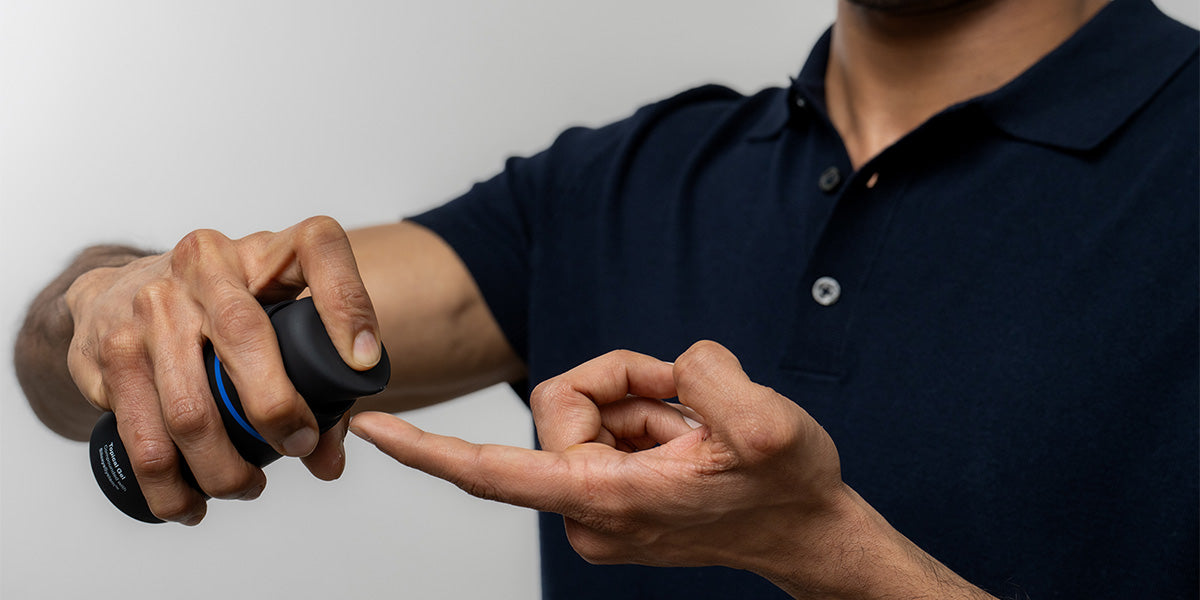So, you’ve heard about topical finasteride for hair loss, but you don’t know how to get it or perhaps you already take oral finasteride and want to switch to a topical solution. Can you just make your own at home?
We’re going to deep dive into this question and address all the risks involved in making your own topical finasteride and explain why shouldn't. We also asked Dr. Simon Pimstone, MD, PhD, FRCPC and CEO of XYON, with decades of experience in biotech and drug development, for his input on the topic.
What is topical finasteride
Oral finasteride is an FDA and Health Canada approved drug used to treat male pattern hair loss (androgenetic alopecia). It may also be prescribed as a topical medication off-label, compounded in a base. Finasteride is a DHT-blocking drug which prevents an enzyme called 5-alpha reductase from converting testosterone into dihydrotestosterone (DHT). DHT is the primary contributor to male pattern baldness.
An alternative to oral finasteride is topical finasteride. Topical formulations of finasteride are created by compounding the active ingredient (finasteride) into a base to allow the drug to be directly applied to the skin. The potential benefits of using topical finasteride instead of oral include:
- The medication can be applied directly to the affected area of the scalp.
- Reduced systemic absorption which may reduce the risk of side effects.
Can I make topical finasteride at home using finasteride pills?
Your search for the cheapest and most tolerable hair loss solutions might’ve led you to countless articles and videos of people explaining how you can crush up oral finasteride tablets to create your own topical medication.
Do not make topical finasteride from finasteride pills, the additional chemicals in finasteride pills can cause scalp irritation and you cannot control the dosage making the topical formula ineffective. Trying to create your own topical solutions comes with many risks that likely outweigh any potential benefits. Other sources promoting this technique online tend to gloss over these concerns. We’re here to set the record straight on making topical finasteride, explaining all the issues you could encounter if you attempt this yourself.
What are the risks of creating your own topical finasteride?
-
Extra ingredients are included in oral finasteride
To make a topical solution, the active ingredient must be compounded into a base and if you attempt to make your own, you’ll likely need to crush up an oral finasteride pill. The first problem with this is the additional ingredients that are present within oral finasteride. For example, each Propecia® tablet is made up of 1mg of the active ingredient and 12 other ingredients that comprise the shape and colour of the pill etc. When you add this to a base to form a topical solution, the inactive ingredients will leave a residue on the scalp which may cause irritation.
As Dr. Pimstone explains “these homemade topical formulations may be irritating, or even worse, toxic. They have the potential to cause damage to cells and the scalp itself.”
-
Residue left behind
Another issue with trying to make topical finasteride yourself is that you’ll almost certainly lose some of the active ingredients when grinding the pill. This can result in drug residue being left around your home that you might not even know is there.
This can be potentially dangerous for anyone who is pregnant or trying to conceive. Pregnant women are advised to avoid coming into contact with finasteride because there’s a risk that it could cause birth defects. In fact, men are often advised to stop taking finasteride if their partner is trying to conceive. Ultimately, residue spillage is hard to avoid and likely not worth the risk.
When finasteride is handled in a pharmacy, the technicians take the necessary precautions for handling the medication. This includes using a powder hood and deep cleaning areas to ensure no residue is present. They are also prepared under conditions that ensure the final product will not have any bacterial contamination. You are very unlikely to be able to replicate this environment at home.
-
Your solution might not be effective for hair loss
With homemade topical finasteride, there’s no real way for you to know whether your formula can effectively penetrate through the skin and have an effect on the hair follicles. As Dr. Pimstone explains:
“When trying to incorporate your medication into a topical solution, you run the risk of adding the active ingredient in too small concentrations which will result in an ineffective solution, or too high concentrations which may result in adverse effects.”
Weighing out medications is a complicated and precise art and can mean the difference between a topical solution being effective or not. These differences can be small enough that a standard kitchen scale won’t pick up on them.
In this case, your topical formulation will build up on the scalp without having any real effect on hair growth. This can lead to months of wasted time without seeing any results and may endanger your hair further, by delaying you from seeking advice and treatment from a medical professional.
Dr. Pimstone also explained that it would be difficult to make your own stable solution:
“It’s important to note that clinically tested topical solutions are made to be stable, meaning that the active ingredient within the solution, such as finasteride or minoxidil, will not degrade over time. If unstable, the solution could be rendered inactive, meaning that it won’t have any desired effects”
This means that even if you are initially successful in creating your own topical finasteride, your solution could become inactive over time and stop being effective for hair loss.
Where can I buy topical finasteride?
Now that we’ve established why you shouldn’t attempt to create your own topical finasteride, where can you get it?
There are various topical finasteride solutions available on the market, that vary mostly in the vehicle or base that finasteride is compounded in (e.g. gel, spray, solution). At XYON, we have designed and patented a gel technology known as SiloxysSystem Gel™ to safely and effectively deliver hair loss treatments.
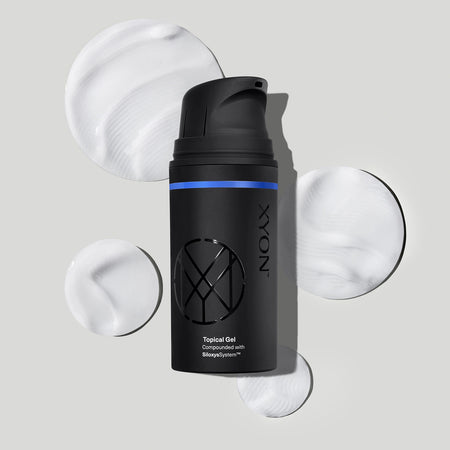
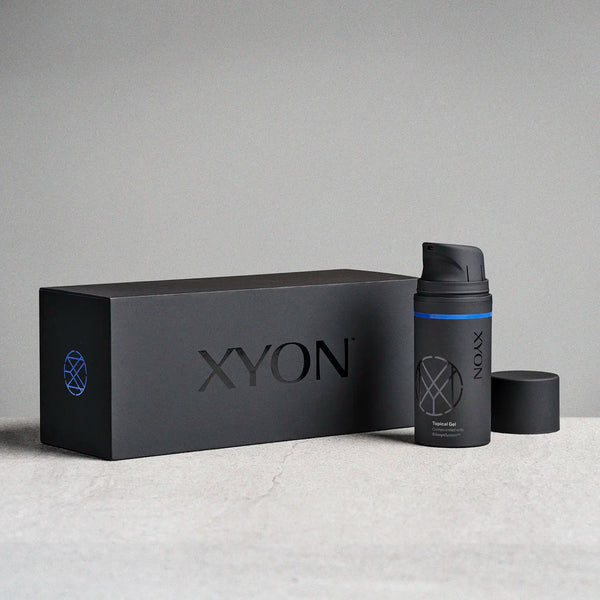
A patented delivery system designed to deliver the best results.
Experience SiloxysSystem™ Gel. It's topical hair loss treatment, elevated.
What's so great about SiloxysSystem Gel™?
SiloxysSystem Gel™ is designed to slowly release hair growth medication to affected areas of the scalp, whilst minimizing the absorption of the drug into the bloodstream. By minimizing absorption into the bloodstream, SiloxysSystem Gel™ may help reduce the risk of experiencing side effects such as erectile dysfunction and decreased libido (sex drive). Clinical data has proven that 92% less medication is absorbed into the blood stream with SiloxysSystem Gel™ compared to oral pills and 57% less medication left in the body 24 hours after use.
There are other treatment options available for hair loss that you may choose to explore, including other topical medications, such as topical minoxidil.
Topical minoxidil
Topical minoxidil is an FDA and Health Canada approved medication for hair loss. It’s available over the counter at different concentrations (2% and 5% as solution or foam). Its mechanism of action is less straightforward than DHT-blockers like finasteride, but it essentially improves blood circulation to the scalp and may also positively influence the hair growth cycle, helping hair follicles to stay in the active growth phase for longer.
If you’re interested in a combination treatment for pattern hair loss, you’re in luck. At XYON, we offer a combination treatment of topical finasteride and minoxidil, compounded in SiloxysSystem Gel™. Research has shown that taking these two medications together may be significantly more effective than using either drug alone, producing visible improvement in hair growth in as little as 3 months (Hu et al, 2015). With that being said, we strongly advise against trying to create this yourself.
Takeaway
Is it technically possible to create your own topical finasteride at home? Yes. Should you? We don’t recommend it. There are plenty of topical finasteride options available on the market that have been formulated in a controlled environment and at concentrations that are deemed effective. Using a homemade solution could lead to months of wasted time using a treatment that may not be effective for hair growth at all. There are no overnight solutions to hair loss. When it’s matter of health, it’s important not to underestimate the potential risks of hair loss treatments that haven’t been thoroughly tested. We recommend speaking to a medical professional at the first sign of hair loss, so that you can discuss the most appropriate treatment options for you.
References
Hu, R., Xu, F., Sheng, Y., Qi, S., Han, Y., Miao, Y., Rui, W., Yang, Q. (2015). Combined treatment with oral finasteride and topical minoxidil in male androgenetic alopecia: a randomized and comparative study in Chinese patients. Dermatologic Therapy. https://doi.org/10.1111/dth.12246
